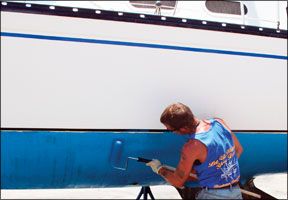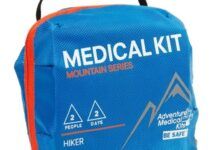For the last year, Practical Sailor has been conducting head-to-head antifouling field tests on four boats (two sail, two power). In August 2005, we painted one of our test power boats&emdash;a 21-foot Parker&emdash;with three coats each of two products: Interluxs Tarr & Wonson Copper Boat, a soft paint, or sloughing workboat paint, that is one of the cheapest on the market, and Interluxs Micron 66, an advanced (and expensive), ablative copolymer paint blended to release biocide at a controlled rate. So far, Tarr & Wonsons field testing and panel results indicate that a budget paint will hold out well for at least one season without hard growth, although you may have to scrub the bottom once or twice. At one-third the price of Micron 66, the Tarr & Wonson paint is not as effective, nor do we expect it to be.
****
Last month, we presented the bi-annual data collected from our anti-fouling test panels that we sink each year in Long Island Sound, Conn., and Key Largo, Fla.
These painted panels are just part of the bottom paint equation. Once
Practical Sailor testers identify some potential winners, the paints are applied to various test boats. For the last year, Practical Sailorhas been conducting head-to-head antifouling field tests on four boats (two sail, two power). When painted, each test boats bottom is taped off into quarters, with one paint on the port bow and starboard stern and the other on the starboard bow and port stern. This gives the two paints nearly equal exposure to sunlight and water flow. Here is an update on one of those test boats after one year. The table (below) also summarizes our other head-to-head tests.

Micron 66 vs.
Tarr and Wonson
While expensive paints tend to do better in our testing after 18 months, we have often found some of the cheapest paints still fight hard growth at the 12-month mark. This observation suggested an interesting challenge: a good, cheap “old school” paint against one of the most expensive high-tech options.
In August 2005, we painted one of our test power boats&emdash;a 21-foot Parker&emdash;with three coats each of two Interlux products. The boat is docked in a shallow, brackish canal in Sarasota, Fla. It is used at least once a week.
The first paint, Interluxs Tarr & Wonson Copper Boat, is a soft, sloughing “workboat” paint. This no-frills ablative bottom paint harkens back to 1863, when the original Tarr & Wonson&emdash;one of the first successful copper paints&emdash;was first patented in the United States. The soft-sloughing paint exposes more biocide as it wears away. In our most recent panel test reports (October 2007), Tarr & Wonson scored Good in Connecticut and Fair in Key Largo. At $65 a gallon, it is one of the cheapest bottom paints around.
The other paint, Interluxs Micron 66, is just the opposite. This advanced, ablative copolymer paint is blended to release biocide at a controlled rate. It works only in salt water, so is not suitable for freshwater application. Micron 66 has regularly finished among the best paints in our test, particularly over the long term. At $200 a gallon, it is one of the most expensive anti-fouling paints on the market today.
For the first three months of the test, the boats hull was virtually clean, with no slime at all. After six months, a thin layer of slime coated a wide band along the waterline in all sections, and we lightly wiped it with a sponge while the boat was in the water. On some of the Tarr & Wonson sections, it took slightly harder scrubbing to wipe away the slime.
After a year of immersion, the Micron 66 again had less slime than the Tarr & Wonson sections. Some small patches of Tarr & Wonson have flaked away near the waterline, but the boat still does not have any barnacles on the hull. Again, the slime wiped away easier from the sections painted with Micron 66.
Conclusion
So far, Tarr & Wonsons field testing has validated our panel results. Both tests indicate that a budget paint will hold out well for at least one season without hard growth, although you may have to scrub the bottom once or twice. At one-third the price of Micron 66, the Tarr & Wonson paint is not as effective, nor do we expect it to be. For someone who hauls out seasonally, uses their boat frequently, and doesn’t mind painting each year, it is a cheap way to prevent hard growth. Because it is an ablative paint, no special prep work is required when repainting, and you can paint up to four coats without worrying about buildup.
Only time will tell whether this paint is a viable alternative for year-round boating in Florida, where one can make a significant savings by prolonging the period between haulouts.
We are also concerned about the three small spots (less than 3 square inches) where the paint apparently failed to adhere, but we believe that this is due to some surface contamination during the application. Be aware that scrubbing soft-sloughing paints like Tarr & Wonson in the water is bad for the environment, and it is even against the law in some places. Watch for future updates on the sailboat bottom paint field tests.





































